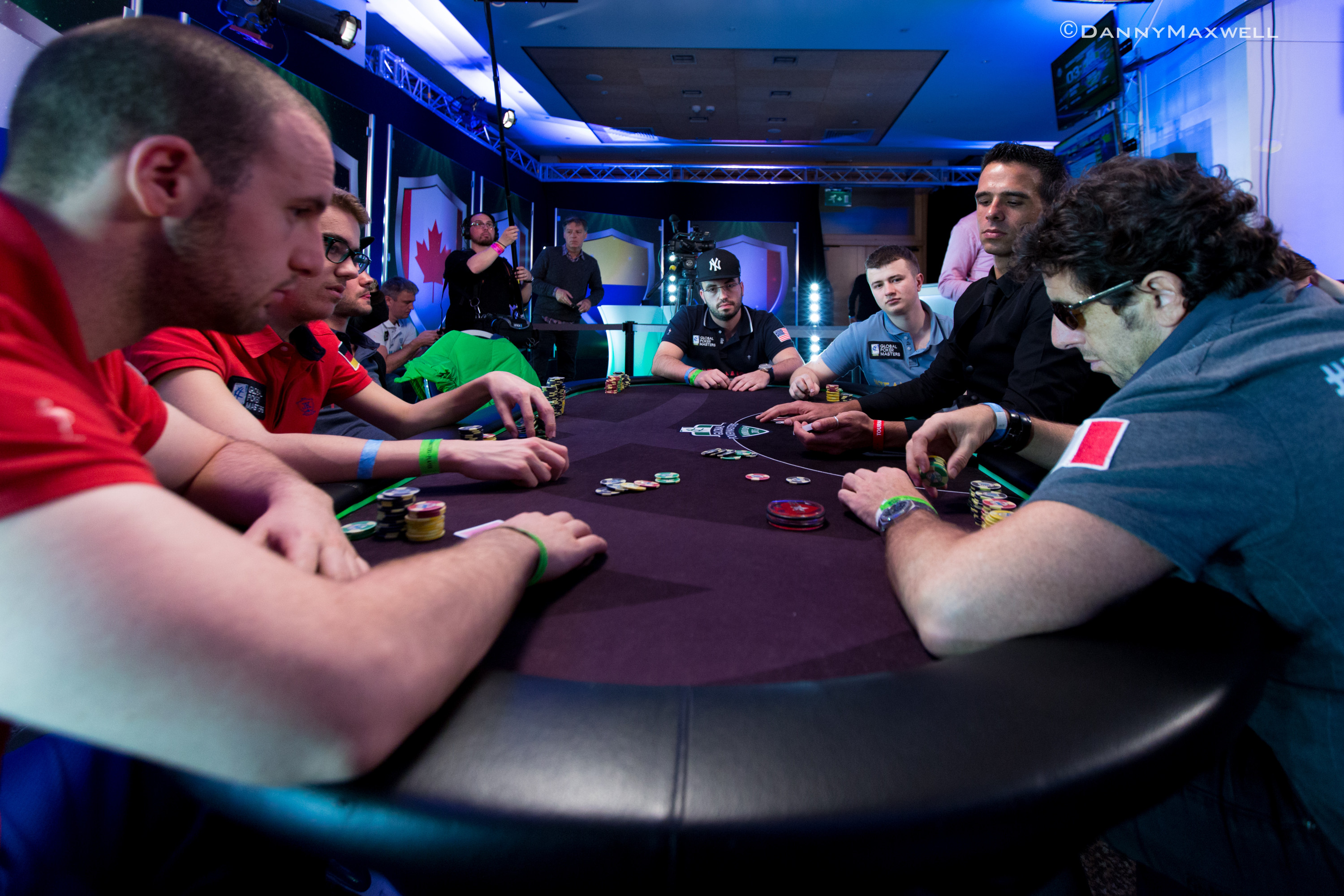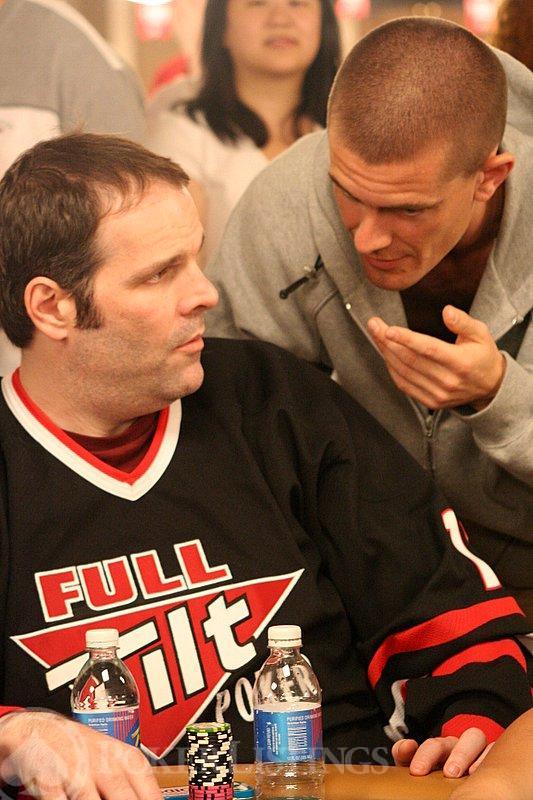How To Play Loose Aggressive Poker
What are VPIP and PFR and how do they affect your game?
VPIP and PFR are two basic but powerful poker statistics. Combined, they give you a clear picture of how your opponents are playing and ways to exploit their mistakes.
VPIP: Voluntarily Put In Pot
VPIP tracks the percentage of hands in which a particular player voluntarily puts money into the pot preflop. VPIP increases when a player could fold but instead commits money to the pot preflop. This includes limping (merely calling the big blind), calling, and raising.
Posting the small and big blinds does not influence the VPIP statistic. These actions are involuntary and therefore give no useful information on player tendencies.

PFR: Preflop Raise
PFR tracks the percentage of hands in which a particular player makes a preflop raise when having the opportunity to fold or call instead. This includes reraises.
The relationship between VPIP and PFR

How to Play Texas Hold'em. All in, partner? Texas Hold'em is a popular kind of poker in which each player is dealt two hidden cards and hopes to combine this 'hold' with 3 or 4 from the community pool of five dealt cards that are shared to. This is a discussion on Loose players vs tight players / late game behavior changes within the online poker forums, in the Tournament Poker section; Hello everyone! I noticed a pattern among the. How To Play Strip Poker – An Overview. Strip poker rules can be applied to any poker variant. Texas Hold’em is a good choice as the centerpiece of a strip poker game, as its the game most familiar to people these days. Any poker variant, or any card game for that matter, can be used to play strip poker. Aggressive play refers to betting and raising. Passive play refers to checking and calling. Unless passive play is being used deceptively as mentioned above, aggressive play is generally considered stronger than passive play because of the bluff value of bets and raises and because it offers more opportunities for your opponents to make mistakes.
VPIP is always higher than PFR. All preflop raises increase VPIP, but not all actions that influence VPIP will affect PFR. For example, limping preflop will increase VPIP but not PFR.
New players usually call too much preflop. Calling far more often than raising causes your VPIP to rise higher than your PFR, creating a gap between the two stats. This is a warning sign that you are moving away from the aggressive strategy essential to winning at poker. Winning players have a tight gap between their VPIP and their PFR.

A quick rule of the thumb is that the higher the PFR, the more aggressive a player is. The bigger the gap between VPIP and PFR, the more passive a player is.
Identifying player types using VPIP/PFR
VPIP and PFR are the key indicators of how your opponents understand the game of poker and of their overall strategy. Within 10 hands, Poker Copilot will give you a rough outline of an opponent’s play style. 100 hands are enough for a good idea of whom you are playing against, and 1000 hands give you a very clear picture of a player’s preflop strategy.
These are examples of six-handed poker VPIP/PFRs and the player types associated with each statistical breakdown.
Very high VPIP and low PFR: 75/10, 52/5, 60/15
A player with a high VPIP and low PFR is one you want at your table. These opponents play far too many hands, and they usually play them very passively. Players who have a very high VPIP and low PFR call far too much preflop. When they do raise, they are weighted towards value. These are passive players, and are known as “whales.”
High VPIP and low PFR: 40/15, 35/12, 30/5
How To Play Loose Aggressive Poker Games
These statistics, like the above, are also associated with losing players. These players prefer to call too frequently and raise too infrequently, but not to the extent of the whale.
Remember that passive play preflop is often an indicator of passive play post-flop.
Normal VPIP and low PFR: 18/1, 22/3
These statistics are associated with very tight players, known as “rocks.” They wait patiently for aces and kings, and only like to raise with their best hands. These players may, however, enjoy trapping and playing tricky, and will sometimes employ a limp/reraise strategy.
Bear in mind that their raises are almost always weighted towards very strong value hands.
Low VPIP/PFR: 10/8, 14/12
Players with a low VPIP and PFR but with a tight gap between their stats are what poker players call “nits.” They play a very tight range of hands, and usually play their range advantage aggressively post-flop.
Reg (professional) VPIP and PFR: 15/14, 19/17, 22/18, 28/23
Regs are almost always winning or break-even players. These players have small gaps between their VPIP and PFR. Regs can range from very tight to very loose. At one end of the spectrum, a player with 15/14 statistics will be an overly tight regular. At 28/23, the player may be playing too loose and aggressively.
Solid regulars generally have a VPIP/PFR between 19/17 and 25/23. As you move up in stakes, the rake (the amount taken from each pot by the poker room) decreases as a percentage of the pot and players are able to use wider ranges. Winning regulars often have statistics closer to 28/20 or 27/19 at the higher stakes.
Really, there is no incentive to playing more pots against good regulars. In poker, you should be trying to play as many pots as possible with losing players, known as “fish.” VPIP and PFR indicate who these fish may be, and ways to target them.
VPIP and PFR for Six-Max vs. Full Ring
The VPIP/PFR of a winning player at a six-handed table is different from that at a full ring, nine-handed table. The additional players in full ring necessitate a tighter playing style. This is because you are opening from the first positions into more players, and are therefore more likely to run into a hand that can call or reraise you.
When players open from early positions, they often have stronger holdings, which means other players are less likely to call or reraise them. This combination causes lower VPIP/PFR statistics for full ring games.
Winning regulars generally have a VPIP/PFR of between 11/8 and 16/14 in full ring games. The higher the skill level, the wider they can be, and some regulars are able to profitably play statistics like 22/20 at full ring.
Tournament VPIP/PFR
How To Play Loose Aggressive Poker
VPIP/PFR in tournaments depends on the structure and the stage of the tournament.
Multi-table tournaments (MTTs) can have thousands of players and generally start out with large stacks compared to the blinds. This leads to play that can be even tighter than full ring poker. In the early stages of tournaments, expect to see good regulars with stats that would be considered nitty even in full ring.
In the later stages of the tournament, however, as the blinds increase and stack sizes are smaller in comparison, you will see looser statistics. The shorter stack sizes necessitate a more aggressive style of play.
Aggression is also influenced by the “ante.” Usually, in the later stages of tournaments an ante will be in play. The ante functions like a smaller version of the small blind that each player must post before each hand. This causes play to loosen up considerably. You will find that strong players will have a much looser VPIP/PFR the later the tournament runs.


Turbos and hyperturbos are shorter, faster-paced tournaments. They have rapidly increasing blinds, which means that an aggressive, loose style of play is required. In these tournaments, VPIP/PFR will be much higher.
VPIP and PFR are the most important poker statistics
Long-term winning players will almost always fall within VPIP/PFR ranges for their chosen game type. Those who are outside these ranges can be easily identified and exploited. Understanding and utilizing VPIP and PFR is the first step towards greatly improving your own game.



